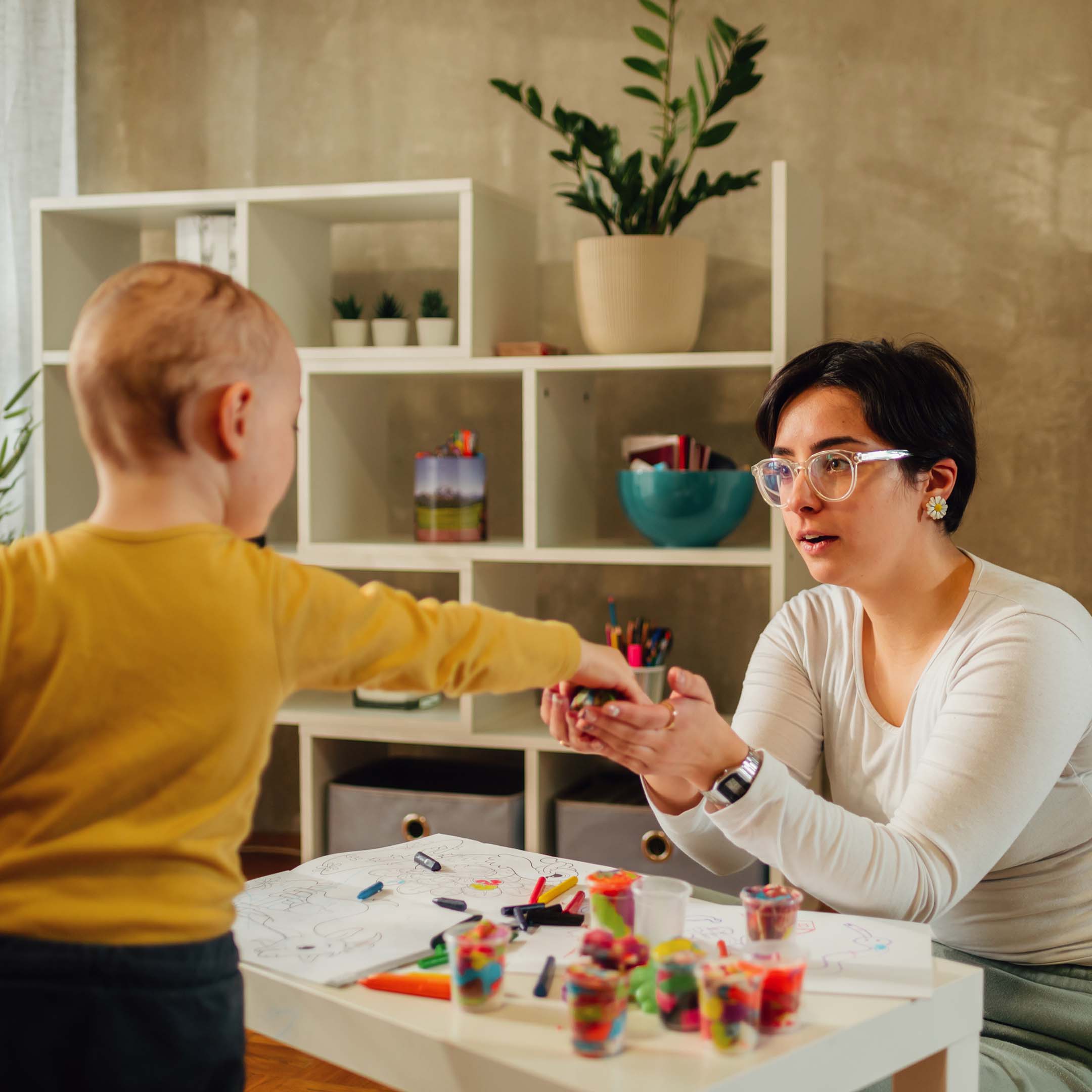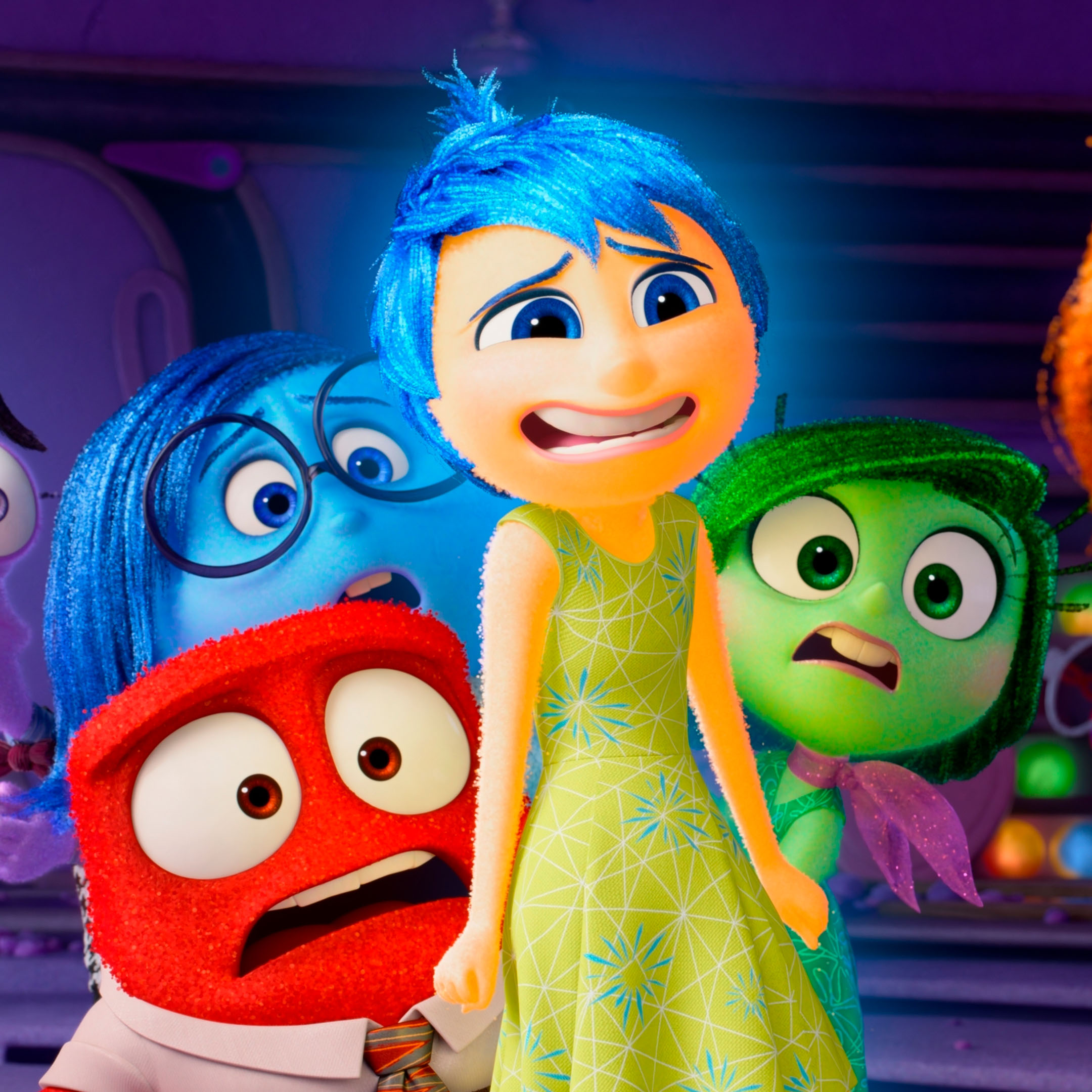Consent Starts in the Early Years: Teaching Respect, Rights, and Boundaries from the Beginning
We are part of a generation that is reshaping the way we talk to children, and with good reason. For too long, children were expected to obey without question, to suppress discomfort, and to accept that adults always knew best. Today, we recognize that this approach can unintentionally silence children’s instincts and blur their understanding of boundaries. As parents, educators, and caregivers, we are redefining what it means to raise emotionally healthy, empowered kids. We are choosing to lead with respect, clarity, and connection because we understand that how we speak to children now shapes how they will speak up for themselves later. This cultural shift isn’t about being permissive, it’s about being protective, intentional, and rooted in the belief that every child deserves to feel safe, heard, and respected.
When we teach young children about consent, we’re not just teaching them manners or social skills – we’re laying the foundation for body safety, mutual respect, and the prevention of future harm. Children are whole people with thoughts, feelings, and boundaries that deserve to be honored from the very beginning.
But unfortunately, many of the everyday messages young children receive tell a different story.

The Power of Language: How We Talk to Kids Matters
Language shapes perception. How we talk to children reflects how we think about children. And how we talk about their bodies, their choices, and their preferences teaches them how much those things matter, or don’t.
When we use language that supports autonomy and consent, we are communicating that children are not passive, powerless beings. We are saying: Your body belongs to you. Your voice matters. You have the right to say no.
This shift in language isn’t minor, it’s radical. And it matters deeply.
The Reality: Children Learn the Culture Around Them
From a very young age, children absorb the attitudes, beliefs, and customs of the adults in their environment. If we normalize that grown-ups can override a child’s preferences (“Give your uncle a kiss!” “Don’t say no to grandma!”), we’re teaching them that boundaries are flexible, and that others can choose for them.
This is not just a parenting issue, it’s a cultural one. And it’s a safety issue, too.
Why This Matters: A Psychologist’s Perspective
As a child psychologist, I’ve seen firsthand how early experiences around consent and bodily autonomy shape a child’s development and their vulnerability to harm. When children are taught to ignore discomfort, silence their instincts, or comply to avoid upsetting others, they may be less likely to recognize or speak up about unsafe situations.
Teaching children about consent from the start empowers them with language, confidence, and internal awareness. It helps them understand when something feels wrong and gives them permission to tell someone. When children know that they are allowed to say “no,” and that their “no” will be respected, they are better equipped to protect themselves and seek help.
This kind of education is a key protective factor in preventing child sexual abuse. It teaches children how to recognize safe and unsafe touch, how to ask for help, and how to advocate for themselves. It also creates a culture where adults are more aware of boundaries, respect, and the importance of listening to children, further reducing the opportunities for abuse to occur.

Modeling Consent in Everyday Life
Consent education starts long before adolescence. It starts in everyday moments: getting dressed, washing up, saying hello, or playing games. When adults model consent and ask permission in routine interactions, it becomes a natural, lived experience for children. Here’s how we can model consent daily:
- “Can I help you take off your shirt or do you want to try by yourself?”
- “I need some space right now. Please don’t climb on me.”
- “Would you like a hug or a high-five goodbye?”
- “You said stop. Thank you for letting me know.”
Every time we ask permission, we show children that everyone gets to decide what happens to their body, including them. Every time we respect their “no,” we reinforce that their boundaries matter.

Everyday Examples: What Consent Looks Like With Young Children
Instead of…
- Wiping their face without warning
- Saying “Give your cousin a kiss”
- Tickling after they say stop
- Opening their backpack or lunchbox without asking
- Saying “You don’t like these cupcakes? What’s wrong with you?”
Try this:
- “Can I wipe your face, or would you like to try?”
- “Would you like to say hi with a hug, handshake, or a wave?”
- “You said stop. Thank you for telling me you’re all done.”
- “Can I open your lunch bag to help you?”
- “It’s okay to like different things. What would you prefer?”
These small choices reinforce the child’s sense of privacy, self-respect, and ownership over their preferences and body.

Name Body Parts Correctly. No Shame, No Secrets
When we avoid using correct anatomical terms, vagina, penis, vulva, we send children the message that these parts are shameful or off-limits to talk about. But if children don’t have the right language, how can they speak up when something isn’t right? Teach children clear, consistent, age-appropriate vocabulary:
- Use vagina, penis, chest, bottom, etc.
- Talk about “safe” and “unsafe” touch, not “good” or “bad.”
- Introduce the concept of private vs. public parts and spaces.
Make sure children know that no one, other than a doctor or caregiver with permission, should be touching their private parts. And never ask children to keep secrets. Instead, say:
- “We don’t keep secrets, but we can have surprises!”
- “You can always tell me anything, especially if someone makes you feel uncomfortable.”
Digital Consent Counts, Too
Always ask for a child’s permission before taking their photo, showing it to others, or posting it online.
- “Can I take a photo of you in your costume?”
- “Would it be okay to show Grandma this picture?”
- Never share photos or videos of your child crying, sleeping, undressed, or in vulnerable situations.
This teaches them digital boundaries and reinforces the message: You are in control of your image and your body.
Creating Space for Questions and Confidence
Children are naturally curious about their bodies and the world around them. Support that curiosity with open conversations, science-based answers, and age-appropriate books. Encourage questions. Make it normal to talk about:
- How bodies work
- What it means to feel “safe” or “uncomfortable”
- How to ask for help: “I need help,” “I feel scared,” “Can we talk?”
When we treat these conversations as normal, children feel more confident speaking up and more empowered to listen to their instincts.
Teaching consent isn’t about making children fearful. It’s about making them powerful. It’s about giving them tools to navigate the world with confidence, clarity, and the unshakable knowledge that their body is their own.
Every time we say:
- “This doesn’t feel good to me, I need you to stop.”
- “I don’t want you to climb on me right now.”
- “You are allowed to say no.”
…we’re showing them what healthy communication looks like. And we’re helping them build the emotional and cognitive muscles they’ll need for a lifetime of safe, respectful relationships.

Some Resources
These books can help you start meaningful, ongoing conversations with your child about their body, their rights, and their ability to say no. When we read, talk, and model consent regularly, we lay the groundwork for a safer, more respectful world starting right at home.
- “Your Body Belongs to You” by Cornelia Spelman: A simple and clear book that empowers young children to understand that their body is their own, and they have the right to say no to unwanted touch.
- “Let’s Talk About Body Boundaries, Consent and Respect” by Jayneen Sanders: A great introduction to consent and boundaries, using relatable examples and discussion questions to reinforce learning.
- “My Body! What I Say Goes!” by Jayneen Sanders: Focuses on empowering children to speak up, trust their feelings, and understand safe vs. unsafe touch, with affirming language and strong messages.
- “No Means No!” by Jayneen Sanders: A clear, empowering book that teaches children that they have the right to say no, and that their “no” should be respected—always.
- “C is for Consent” by Eleanor Morrison: A board book designed for very young children that introduces bodily autonomy in a calm, accessible way, ideal for toddlers and preschoolers.
- “I Said No! A Kid-to-Kid Guide to Keeping Private Parts Private” by Zack and Kimberly King: Written from a child’s point of view, this book addresses real-life situations in a way that’s honest but not scary.
- “Some Secrets Should Never Be Kept” by Jayneen Sanders: Helps children understand that some secrets are not safe, and it’s always okay to tell a trusted adult.
Consent Is Protection. Consent Is Respect. Setting boundaries and teaching consent are not just parenting trends, they are essential tools in supporting and protecting children from the very real, though difficult to talk about, risk of sexual abuse. While it’s a frightening reality that no adult wants to face, our goal isn’t to raise children in fear or to become overly paranoid. Instead, it’s about empowering them with knowledge, confidence, and the language to understand their rights and trust their instincts. When we normalize conversations about bodies, boundaries, and respect, we give children the tools they need to recognize when something feels wrong and the courage to speak up. We also show them, through our own actions, that consent is something everyone deserves. This isn’t about teaching fear, it’s about building safety, one conversation, one choice, and one respectful interaction at a time.
About the author
Noa Zelman is a licensed child development psychologist with over 10 years of experience helping families navigate the complexities of emotional development. She is a dedicated child psychologist who believes in fostering positive mental health from the earliest years of life. With a deep passion for guiding children in understanding what healthy and safe relationships with people and environments look like, Noa is committed to supporting their emotional growth. Making a lasting impact on the lives of children and their families has been Noa’s greatest motivator, driving a career centered on empathy, education, and meaningful connection.
Division of Psychology, Psychotherapy and Coaching
Psychologist
Children, adolescents and young adults
Languages: English, Spanish, Catalan and Hebrew
Sandplay Therapy: How and why is this technique used in therapy?
In psychotherapy, a wide array of techniques and approaches are used to support the goals collaboratively established by the therapist and the individual or family in therapy. There is no one-size-fits-all solution because effective therapy adapts to the unique needs, emotional demands, and developmental stage of each person, while also aligning with the training and strengths of the therapist. What may be a powerful intervention for one person might not resonate with another, which is why having a diverse therapeutic toolkit is essential.
When working with children, this adaptability becomes even more crucial. Children often lack the verbal skills to express their inner world clearly. Their primary language is not spoken words, but play. Through play, children process experiences, express emotions, and explore relationships. For this reason, play-based approaches are considered foundational when working with younger clients, offering a natural and developmentally appropriate means of communication and healing.
What Is Sandplay Therapy?
Sandplay therapy is a nonverbal, expressive therapeutic approach that uses a sandbox and a variety of miniature figures and objects to create scenes that reflect a person’s internal world. The client is invited to arrange figures in the sand, creating landscapes, symbolic representations, or abstract compositions. The materials can vary depending on what each clinic or therapist offers, but typically include small figurines of different types, animals, natural elements, fictional elements, and structures. A key component of this technique is the inclusion of open-ended materials and loose parts- items like stones, shells, sticks, and fabric—which encourage creativity, symbolic thinking, and freedom of expression.
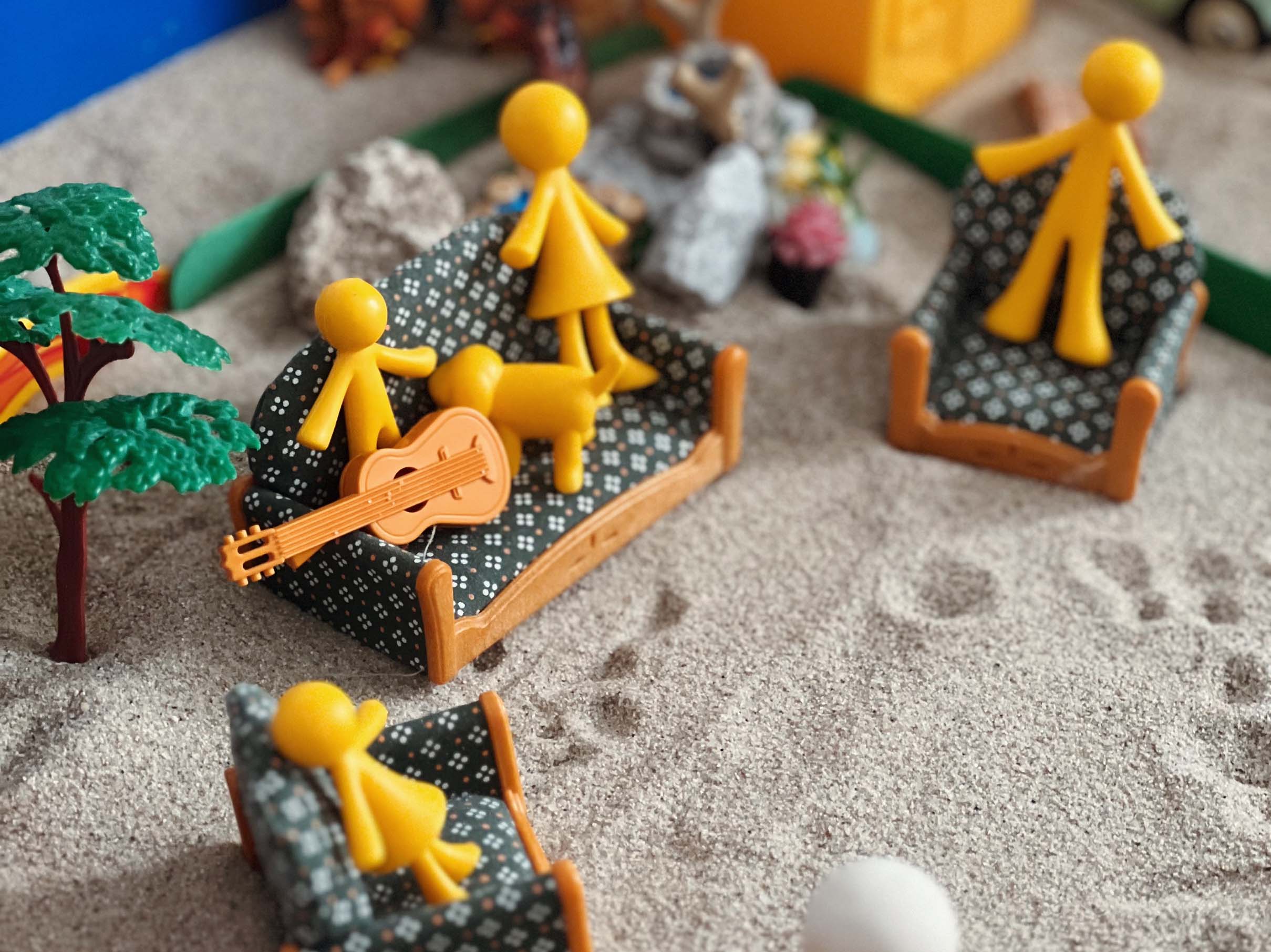
When to Use Sandplay Therapy
Sandplay therapy can be introduced at various points in the therapeutic process, depending on the client’s readiness and the clinical judgment of the therapist. It is particularly appropriate when a client shows openness to creative expression or when verbal communication alone seems insufficient to process certain experiences. For some, it may be introduced early on to establish safety and engagement through a non-threatening medium. For others, it might become valuable later, once a therapeutic alliance has been built and the individual is ready to explore deeper emotional content.
This technique is especially helpful when the client struggles to articulate their thoughts or feelings, whether due to age, trauma, anxiety, neurodiversity, or emotional overwhelm. Sandplay can also be useful when the therapist senses a need to support the client in connecting with their inner world, unconscious processes, or unresolved experiences through symbolic and visual representations. It serves as a powerful tool to help clients externalize complex emotions, visualize internal conflicts, and gain insight in a contained, imaginative, and sensory-rich environment.
Types of Prompts in Sandplay Therapy
One of the strengths of sandplay therapy is its flexibility and adaptability to the needs of each individual. Prompts can be tailored to fit the developmental level, therapeutic goals, and emotional state of the client. Before introducing a prompt, however, it is important to first offer a moment for the client to connect with the sand, both sensory-wise and emotionally. Allowing the individual to touch the sand, feel its texture, and explore it with their hands can help regulate the nervous system and support emotional grounding. This transition into the therapeutic space is especially critical when working with trauma or overwhelming emotions, as it sets a tone of safety, presence, and readiness. It helps the client shift from the external world into their internal experience, preparing them to engage with the materials from a more centered and connected place.
Some examples of guided prompts include:
- “Create a world using anything you want.”
- “Can you represent your family in the sand?”
- “What does moving to a new country look like?”
- “Where do you see yourself in five years?”
- “How would you show your relationship with different emotions, using these materials?”
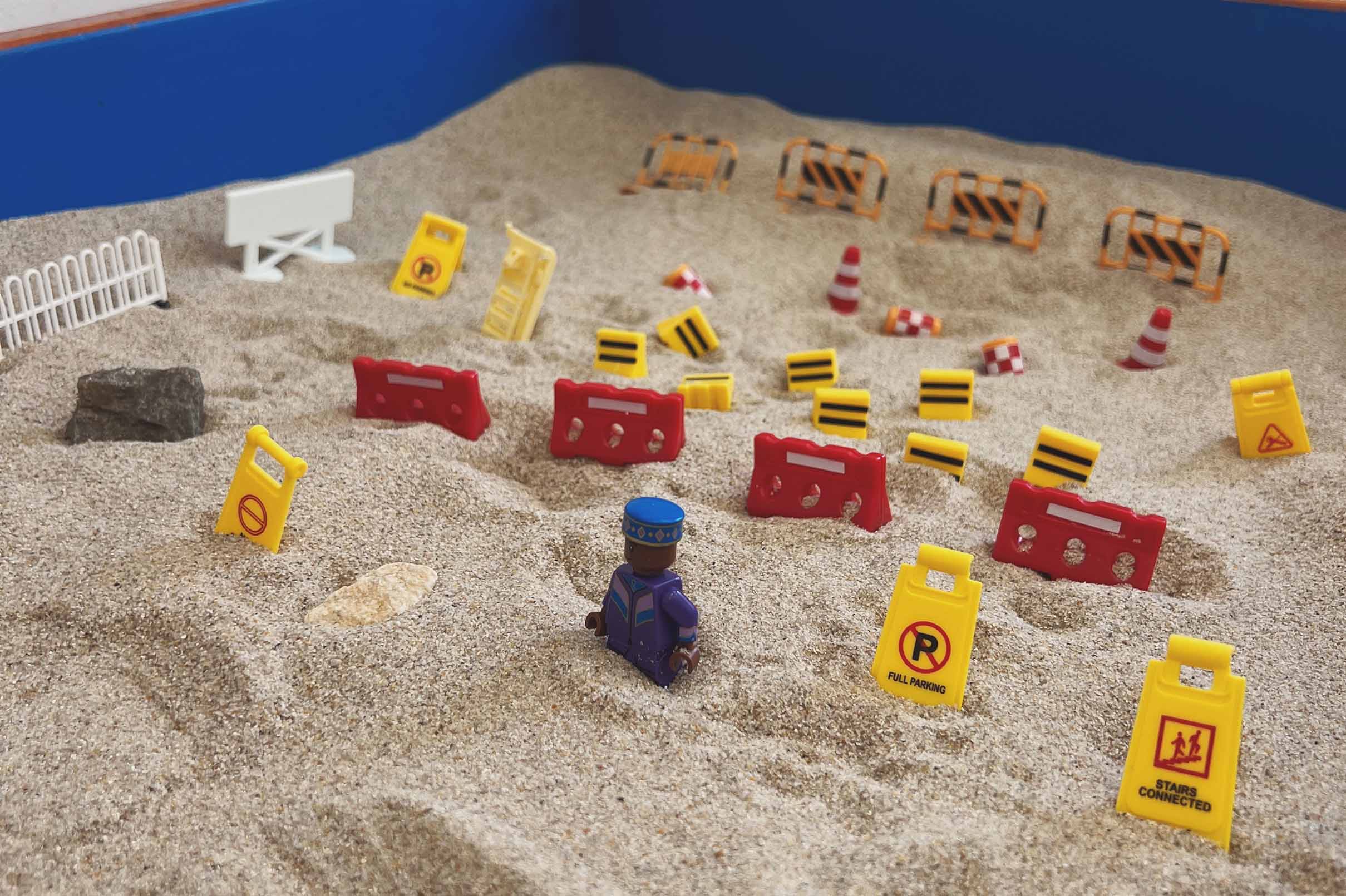
At the same time, it is equally valuable to offer the client complete freedom to engage with the sandbox without any prompt. Some individuals may benefit most from unstructured exploration, touching the sand, selecting objects that resonate with them, or simply arranging items in a way that feels right in the moment. This freedom supports self-direction, allows spontaneous expression, and can lead to rich, unconscious material emerging naturally. Whether structured or open-ended, the process honors the individual’s pace and inner world, making room for authentic and meaningful therapeutic work.
These prompts are invitations rather than directives, allowing clients to project their inner thoughts and feelings into the symbolic realm of the sand tray.
Benefits of Sandplay Therapy
Sandplay therapy offers a wide range of therapeutic benefits, making it a valuable tool across all ages, from young children to adolescents and adults. It taps into deep psychological processes while providing a sense of safety and containment that is essential for healing. Some of the core benefits include:
- Symbolic Communication: Sandplay allows individuals to express thoughts, emotions, and experiences that may be difficult or even impossible to articulate verbally. Through the use of symbolic figures and metaphorical scenes, clients can communicate complex internal dynamics in a non-verbal language that often accesses unconscious material. This symbolic process is especially powerful for those who have experienced trauma, loss, or emotional overwhelm, as it bypasses the need for cognitive processing and opens the door to deep inner work.
- Safe and Contained Environment: The sandbox itself acts as a physical and psychological container, a defined space where internal chaos can be expressed in a manageable way. This boundary provides a sense of safety and structure, essential for individuals who may feel emotionally fragmented or dysregulated. Within this space, intense emotions can be externalized and symbolically organized, allowing the person to gain distance and perspective without being overwhelmed.
- Healing Through Play: Especially for children, play is not just recreational, it is essential for processing and integrating life experiences. Sandplay offers a developmentally appropriate medium for working through challenges such as divorce, grief, relocation, bullying, or attachment disruptions. For adolescents and adults, engaging in play can also reawaken a sense of creativity and spontaneity that fosters healing and emotional release.
- The Therapist as Witness, Not Interpreter: A fundamental principle of sandplay therapy is that the therapist does not immediately analyze or interpret the scenes. Instead, they act as a witness to the client’s process, offering a nonjudgmental, accepting presence. This dynamic reinforces the client’s autonomy and inner wisdom, creating a respectful and empowering therapeutic relationship. Over time, patterns and meanings may emerge naturally through the client's own reflections, or be explored gently if the therapeutic alliance and readiness are present.
- Supports Emotional Regulation: The multisensory engagement of sand, touch, vision, sometimes even sound, has a calming and grounding effect on the nervous system. The tactile experience of handling sand and arranging figures can soothe anxiety, release pent-up emotions, and provide a mindful, embodied way to process feelings. This is particularly valuable for individuals who struggle with emotional regulation, including those with trauma histories, anxiety, or neurodivergent conditions.
- Accesses the Unconscious and Facilitates Integration: By engaging with symbols and narratives that emerge spontaneously, sandplay supports integration of unconscious material. This process often leads to insight, emotional breakthroughs, and shifts in inner conflicts. It can help clients understand themselves in a deeper way, promote self-acceptance, and move toward resolution of long-standing psychological wounds.
- Engages Multiple Senses and Modes of Expression: Unlike talk therapy, which primarily engages verbal and cognitive faculties, sandplay is a multisensory and kinesthetic experience. This makes it more inclusive and accessible for individuals with different learning styles, developmental levels, or cultural backgrounds. It allows for a fuller, more embodied expression of the self.
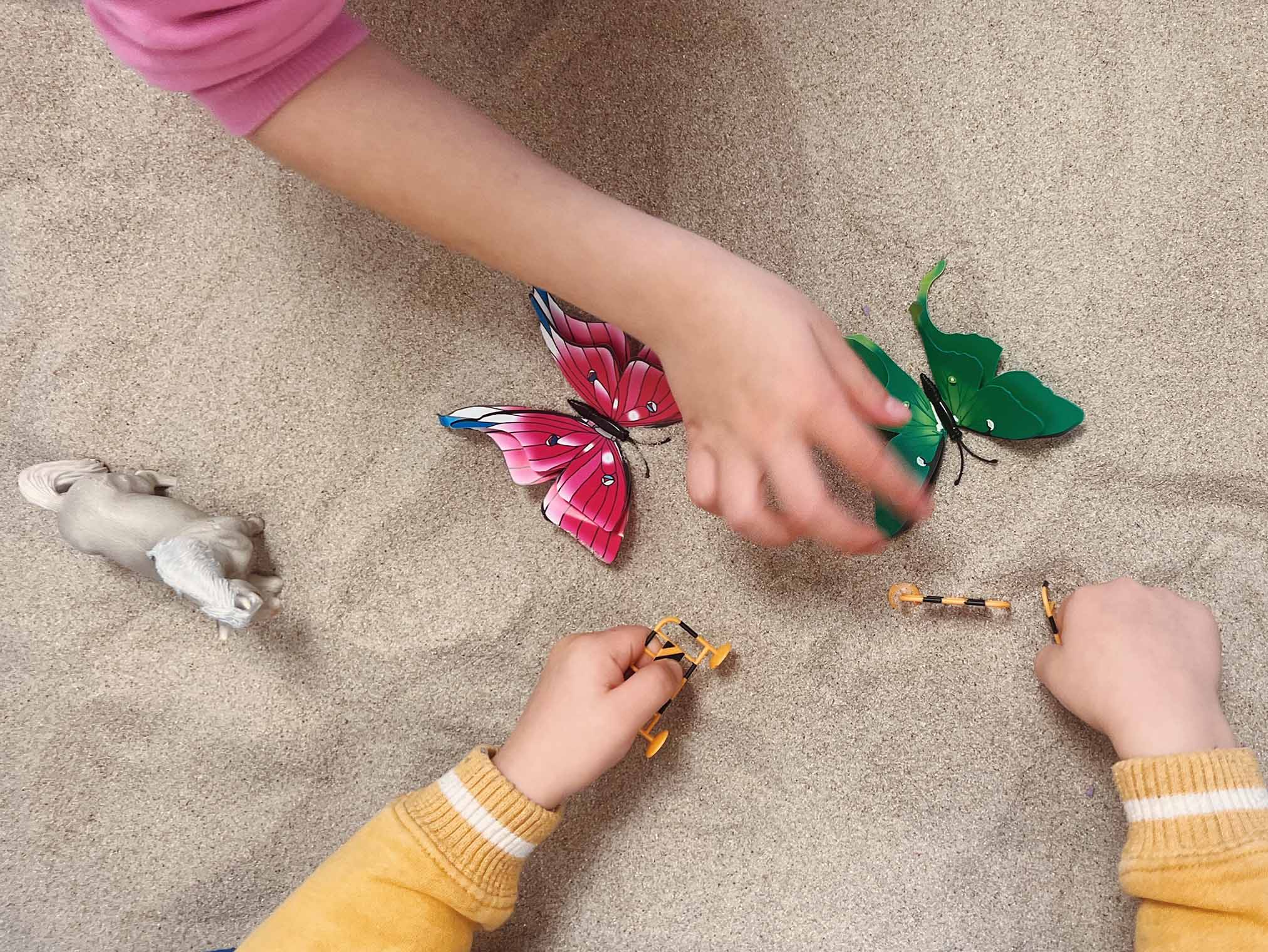
In sum, sandplay therapy is not just an alternative technique, it is a deeply respectful, versatile, and powerful approach that honors the whole person. Sandplay therapy is a unique and powerful technique that supports emotional healing, self-expression, and psychological integration across all stages of life. Whether used with children who speak through play, adolescents navigating identity, or adults processing deep emotional wounds, this approach meets clients where they are beyond words. By offering a safe, contained, and creative space, sandplay invites individuals to explore their internal world symbolically, regulate emotions, and find meaning in their experiences. Its flexibility and depth make it a valuable therapeutic tool for professionals supporting diverse needs across the lifespan.
About the author
Noa Zelman is a licensed child development psychologist with over 10 years of experience helping families navigate the complexities of emotional development. She is a dedicated child psychologist who believes in fostering positive mental health from the earliest years of life. With a deep passion for guiding children in understanding what healthy and safe relationships with people and environments look like, Noa is committed to supporting their emotional growth. Making a lasting impact on the lives of children and their families has been Noa’s greatest motivator, driving a career centered on empathy, education, and meaningful connection.
Division of Psychology, Psychotherapy and Coaching
Psychologist
Children, adolescents and young adults
Languages: English, Spanish, Catalan and Hebrew
What is Child Therapy? A Guide for Parents
In today’s fast-paced world, children are often overwhelmed by the high demands of school, busy schedules, and the pressure to meet societal expectations. This can lead to disruptive behaviors, emotional dysregulation, and difficulties in coping with everyday challenges. While it’s essential to understand the struggles a child may be facing, effective therapy also considers the environment they are in. Sometimes, the key to supporting a child’s well-being isn’t just about addressing their behaviors—it’s about adapting their surroundings to better meet their developmental needs, creating a space where they feel safe, supported, and able to thrive.
Mental health clinics recognize the importance of meeting every individual where they are, including their developmental journey. Just as we support adults in their mental well-being, children also deserve a safe space to process their emotions and challenges. When we fail to provide children with the opportunity to work on their emotional well-being, we unintentionally send the message that their struggles are not as important as those of adults. This can lead to feelings of invalidation and discourage them from seeking help in the future.

One of the most significant positive changes we are witnessing today is the normalization of therapy and mental health care from an early age. More than ever, we are embracing the idea that emotional well-being is just as crucial as physical health. By encouraging children to express their feelings, seek support, and develop coping strategies, we are fostering a generation that understands the value of self-care, emotional intelligence, and resilience. This shift not only benefits children in the present but also equips them with lifelong tools for mental and emotional well-being.
As parents, we want the best for our children, including their emotional and mental well-being. However, it can sometimes be challenging to know when to seek professional support or even to understand what child therapy entails. This guide will help you navigate the essentials of child psychology, when to seek therapy, and how it can benefit your child and you as a family.
What Is Child Psychology?
Child psychology focuses on understanding, observing, and guiding children to develop lifelong emotional and mental skills. It brings awareness to the early years of a child’s life, educating parents and other adults about developmental stages—what is expected and what is not—and providing insights into how to best support their child.
Therapy at an early age promotes positive mental health through mutual respect, deep relationship-building, and playful therapeutic exploration. It involves listening to children, helping them express their emotions, and equipping them with tools to navigate life’s challenges. The goal is to ensure that children grow up feeling understood, supported, and confident in themselves.
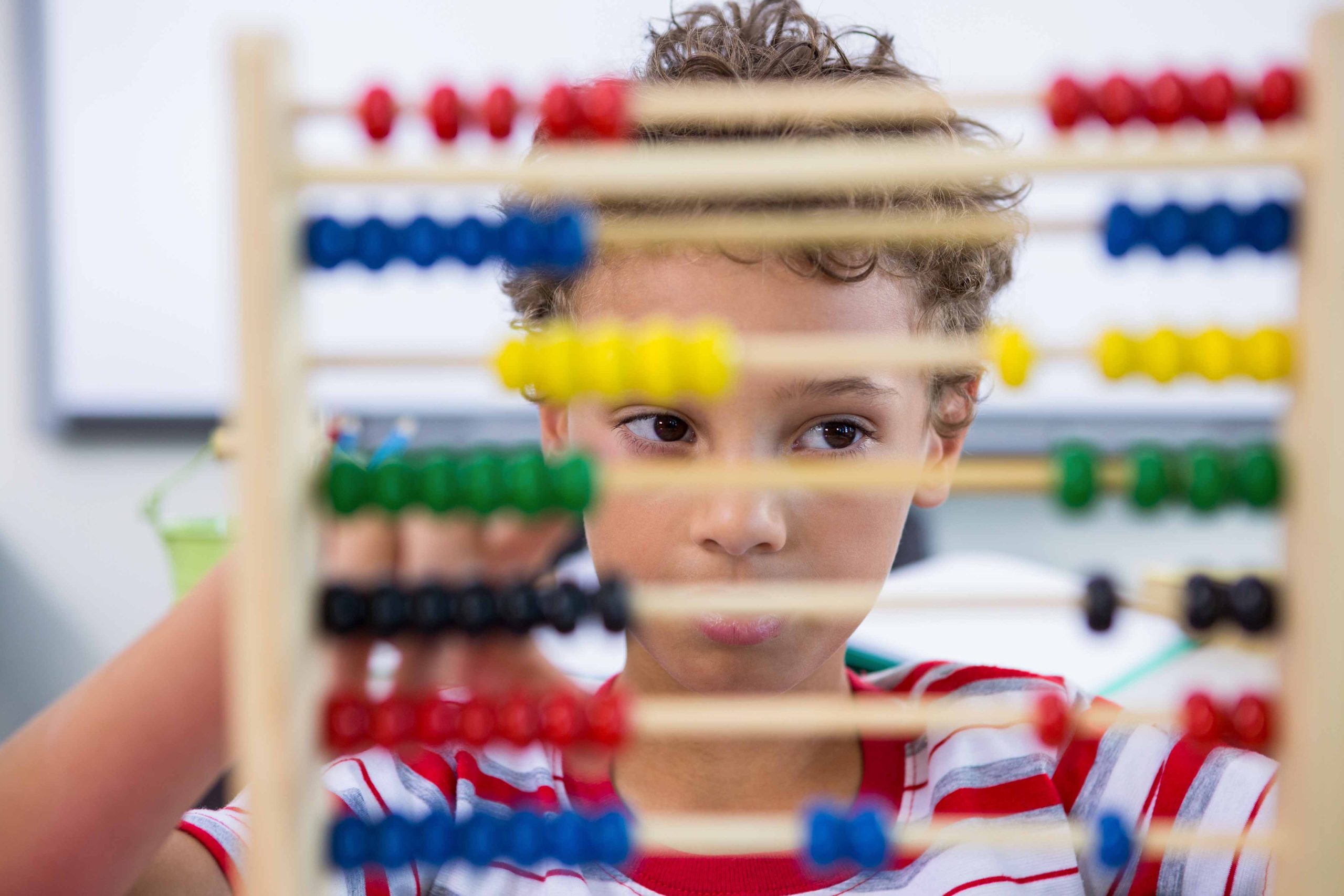
When Should I Take My Child to Therapy?
Just like adults, every child is unique, and so are their struggles. Therapy can be beneficial for pretty much any child, especially if they are experiencing:
- Difficulties at school or home, such as academic struggles, changes in behavior, or social challenges. This includes
- Challenges in expressing their emotions or understanding their own feelings.
- Struggles with parenting techniques—if you feel unsure about how to best support them, therapy can provide guidance.
- A desire to understand themselves better and develop coping strategies for life’s ups and downs.
Seeking therapy does not mean something is “wrong” with your child. Rather, it is a proactive step toward helping them build resilience and emotional intelligence.
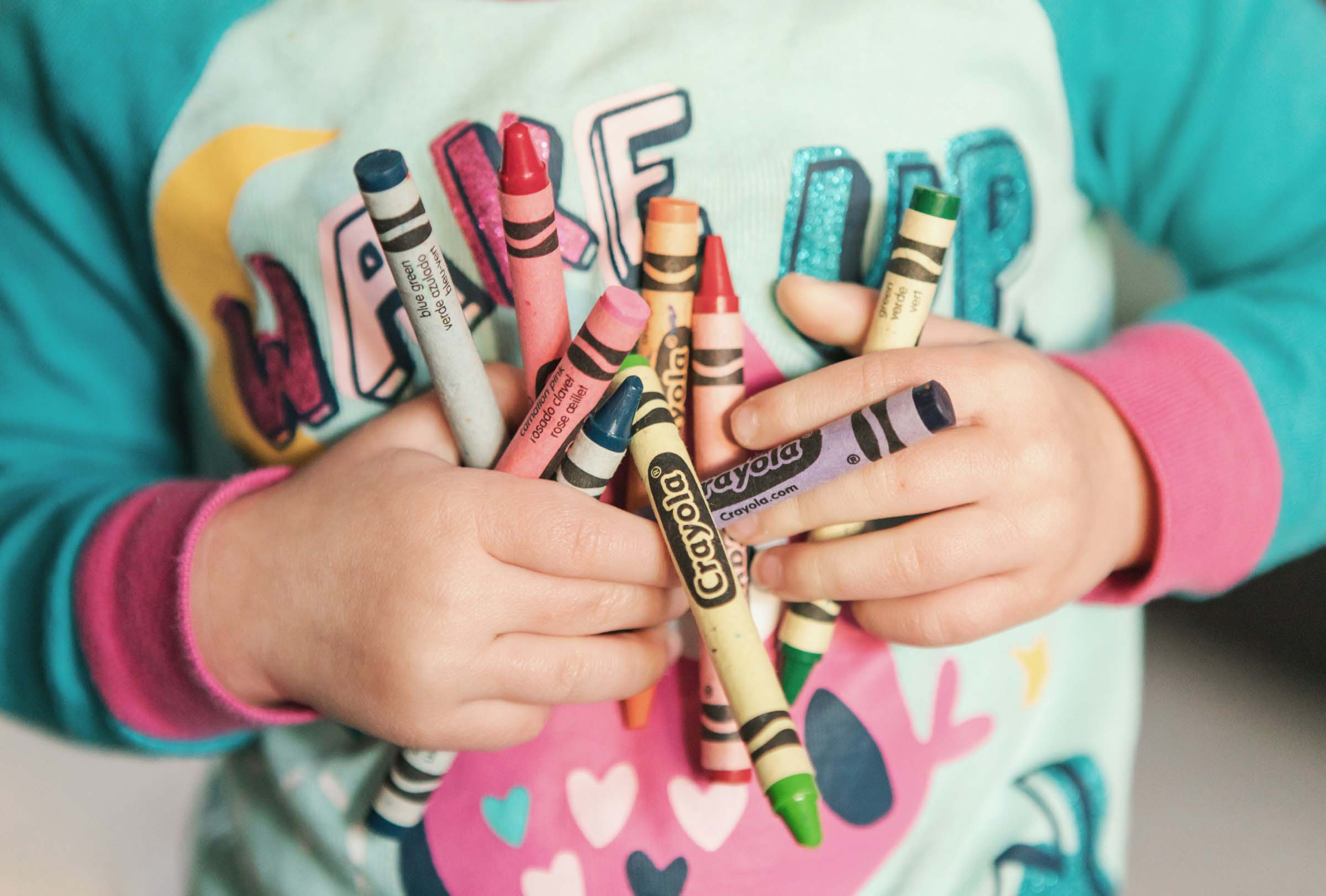
At What Age Can Children Start Therapy?
Parents often wonder when it’s appropriate to seek therapy for their child. The truth is, there is no set age—mental health support can be beneficial at any stage of development. Children as young as toddlers can benefit from therapy, especially if they are experiencing difficulties with emotional regulation, behavior, or attachment. Play therapy, for example, is designed specifically for young children, using toys and creative expression to help them process their emotions in a way that feels natural to them.
For preschool and school-aged children, therapy can help navigate changes such as starting school, family transitions, anxiety, or difficulties with social interactions. Adolescents, who often face increased academic and social pressures, can use therapy as a space to develop emotional resilience, self-awareness, and coping skills.
What Can Therapy Help With?
In short—everything! Child therapy can support children in various aspects of their development, including:
- Emotional regulation and expression.
- Social skills and friendships.
- Anxiety, stress, and mood-related challenges.
- Family dynamics and communication.
- Building confidence, resilience, and self-awareness.
Children today are growing up in a world that moves too fast for their natural pace of development. The pressure to keep up with academic expectations, social demands, and structured activities often leaves little room for the unstructured play and downtime that are essential for emotional regulation and self-discovery. We expect them to manage stress and adapt to challenges at a much younger age than ever before, even though their brains and emotions are still developing. This overwhelming pace can lead to frustration, anxiety, and behavioral difficulties—not because children are incapable, but because their environment isn’t aligned with their needs.
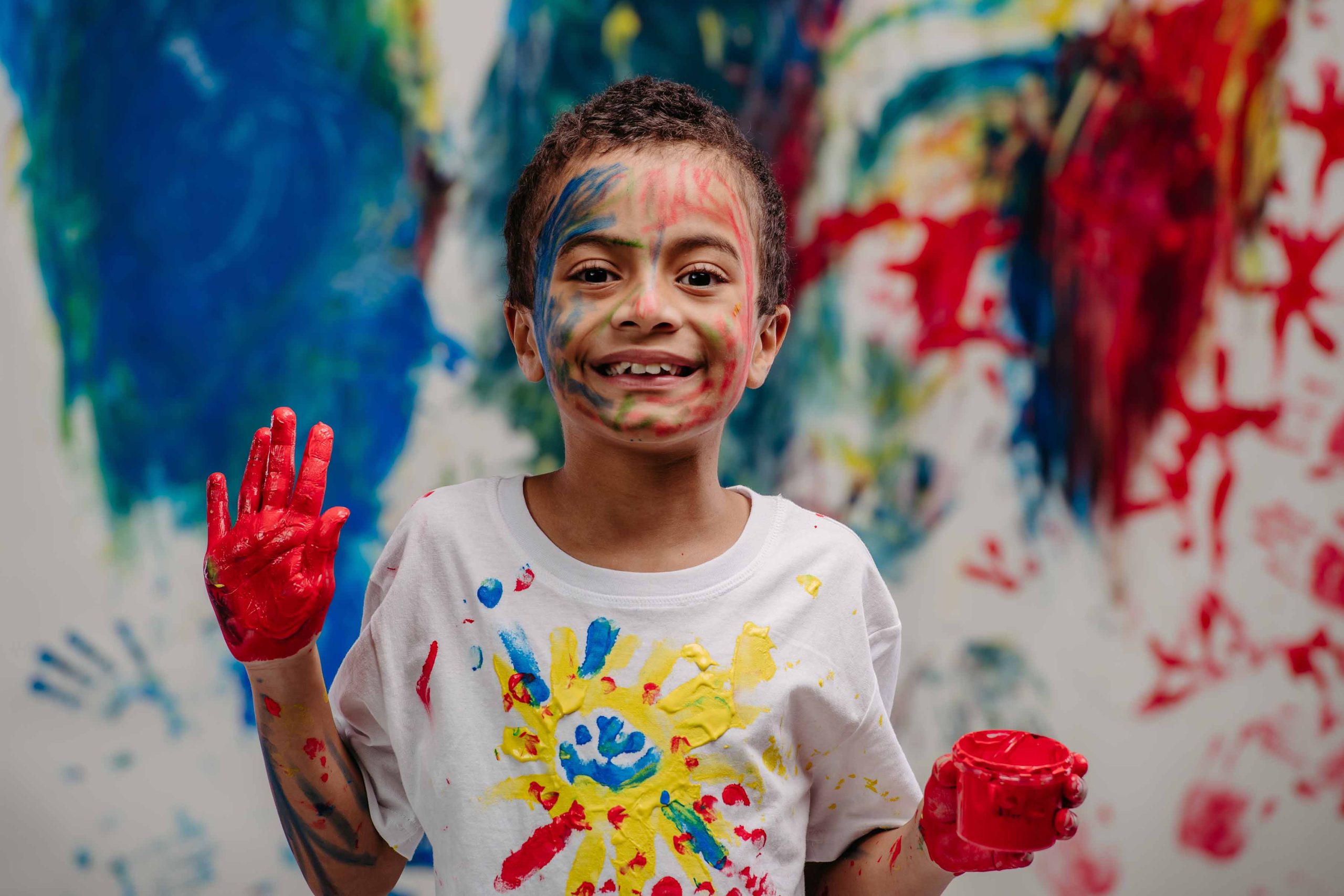
Why Today’s Lifestyle is Not Adjusted to Children’s Needs:
- The world is moving too fast – Children need time to process and grow at their own pace, but modern life pushes them to keep up with adult-like expectations.
- We expect them to cope too early – Emotional resilience takes time to develop, yet we demand that children manage stress and challenges far sooner than previous generations.
- Overwhelm from a fast-paced world – Constant stimulation, digital distractions, and busy schedules leave little space for emotional regulation.
- Less free time to play and feel bored – Unstructured play and moments of boredom are crucial for creativity, self-regulation, and problem-solving, yet children have less time for these experiences.
- Disconnection from self-knowledge – With little time to pause and reflect, children struggle to develop self-awareness and emotional intelligence, making it harder for them to navigate their feelings and relationships.
How Does Child Therapy Work?
Therapy for children is typically play-based and adapted to each child’s individual needs. Play is a natural way for children to express themselves, so therapy incorporates creative methods such as storytelling, art, sandplay, and imaginative play.
A strong relationship between the therapist and the child is crucial. Therapy creates a comfortable, cozy, and safe space where children feel at ease. Through trust and safe attachment, children learn to rely on their own resilience and capabilities. A holistic approach is taken, ensuring that the child’s emotional, social, and developmental needs are met in a supportive and understanding way.

Child therapy is not just for children facing major challenges—it is a valuable resource for any child to develop emotional intelligence, confidence, and self-awareness. If you have concerns about your child’s well-being or simply want to support their growth, seeking therapy can be a positive and proactive step. A child therapist provides a warm and understanding environment, helping children become their best and most authentic selves.
If you’re considering therapy for your child, remember: it’s not about fixing problems, but about fostering growth, understanding, and lifelong emotional well-being.
About the author
Noa Zelman is a licensed child development psychologist with over 10 years of experience helping families navigate the complexities of emotional development. She is a dedicated child psychologist who believes in fostering positive mental health from the earliest years of life. With a deep passion for guiding children in understanding what healthy and safe relationships with people and environments look like, Noa is committed to supporting their emotional growth. Making a lasting impact on the lives of children and their families has been Noa’s greatest motivator, driving a career centered on empathy, education, and meaningful connection.
Division of Psychology, Psychotherapy and Coaching
Psychologist
Children, adolescents and young adults
Languages: English, Spanish, Catalan and Hebrew
Untangling Inside Out 2: How to use this movie as an emotional conversation starter with your teenager?
Parenting a teenager can sometimes feel like navigating a maze of complex emotions. As your child grows, their emotional landscape becomes more intricate, making it harder to connect and communicate. Luckily, movies like Inside Out 2 offer a unique opportunity to bridge that gap. This animated film, like its predecessor, dives deep into the world of emotions, making it an ideal tool for sparking conversations about feelings with your teen. Establishing healthy communication with your children from an early age can be a transformative experience, deeply influencing how they perceive themselves and the world around them.
Here are some ways you can use Inside Out 2 to engage your teenager in meaningful discussions about their emotional experiences.

Start with a Family Movie Night
As a child psychologist, I believe in the importance of connecting before correcting. Creating opportunities for quality time with our children is a key way to open the door to meaningful communication and understanding. Prepare a comfortable environment where emotions can naturally come to the surface. Plan a family movie night to watch Inside Out 2 together. Make it a relaxed and enjoyable experience with your teen’s favorite snacks, and ensure that everyone is present in the moment, without distractions like phones or other devices.

Encourage Open-Ended Conversations After the Movie
After the credits roll, resist the urge to jump straight into the heavy stuff. Instead, ask your teen open-ended questions about the movie. Some examples include:
«What did you think of the way emotions were portrayed in the movie?»
«Did any of the characters remind you of your own feelings?»
«Which emotion do you think was most important for the main character?»
“Did any scenes resonate with something in your life?”
These questions are non-threatening and invite your teen to share their thoughts without feeling pressured. Let them take the lead in the conversation, offering your insights only when appropriate.
Remember to share some of your own thoughts and experiences while and after watching the movie, making sure to do so in a way that’s appropriate for your child’s age. When our children hear about the emotions and challenges that adults face, it helps normalize these feelings and makes them more comfortable opening up about their own.
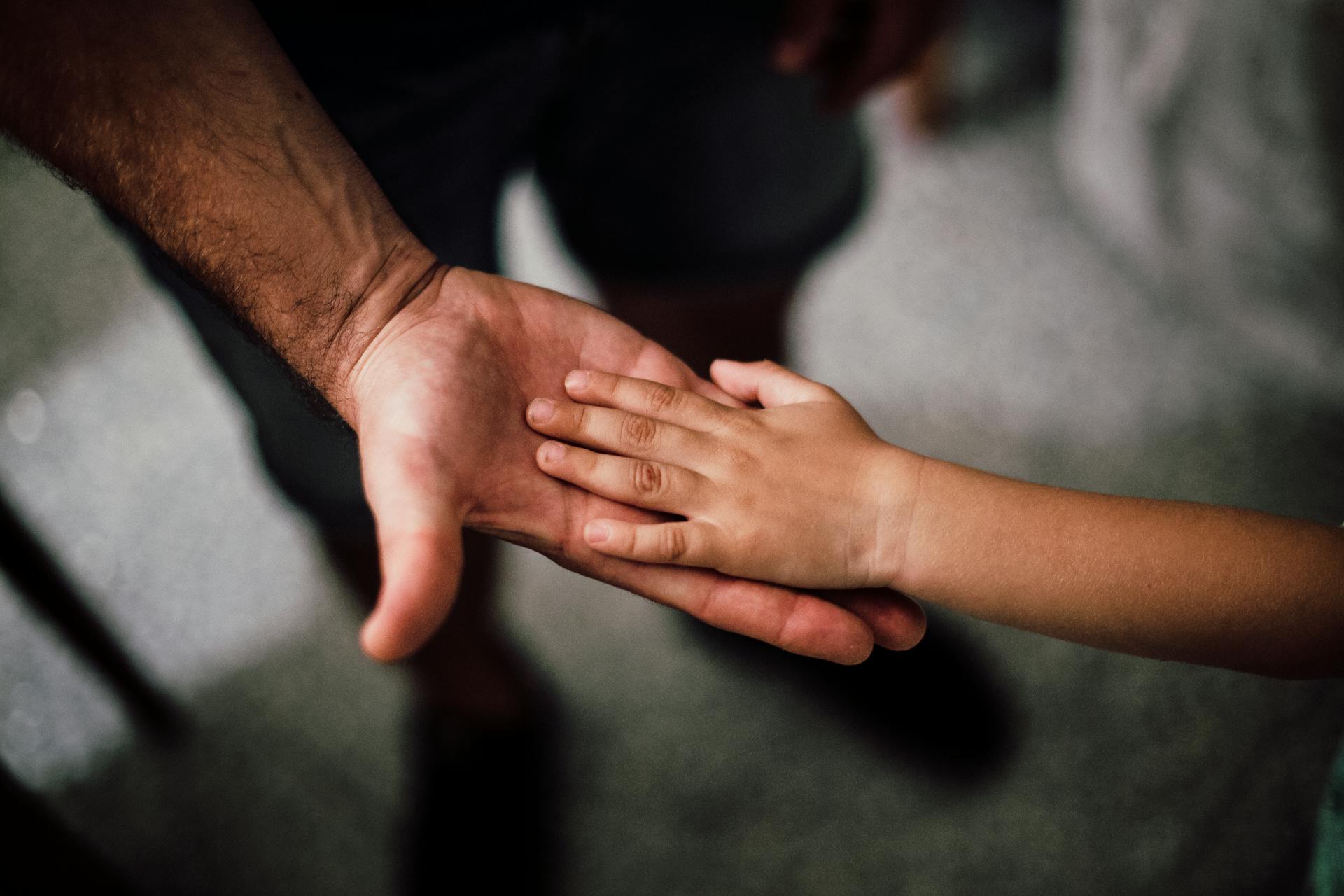
Relate the Movie to Real-Life Situations
One of the strengths of Inside Out 2 is its ability to make abstract emotions tangible. Use this to your advantage by relating scenes from the movie to real-life situations. For example:
«Remember how [character] felt when they had to make that tough decision? Have you ever felt like that?»
«The way the characters showed [specific emotion] was interesting. How do you think you handle that emotion in your own life?
This helps your teenager draw connections between the fictional world of the movie and their personal experiences, making it easier for them to express their own feelings.
If your child (and you) are struggling to express yourselves verbally, consider using art and play as alternative channels for communication that feel more authentic and natural. For instance, you can use jars and colors to label different emotions and invite them to share examples of times they’ve felt each way. You can also guide them towards more specific topics, such as, ‘Can you think of a moment today when you felt anxious at school?’ This approach allows them to explore their feelings in a creative and less pressured environment.

Normalize Emotional Complexity
One of the key themes in Inside Out 2 is that emotions are complex and often mixed. It’s crucial for teenagers to understand that it’s normal to feel conflicting emotions simultaneously, especially during their developmental years. Discuss moments in the movie where characters felt more than one emotion at a time, and share examples from your own life when you’ve experienced something similar.
For instance, you might say, «I noticed that [character] felt both happy and sad at the same time when they made that choice. I’ve felt like that before when I had to say goodbye to someone I care about. Have you ever felt like that?»

Address the “Unpopular Emotions”
Another special approach Inside Out does an excellent job at, is highlighting that all emotions have value, even the ones we tend to shy away from, like sadness, fear, or anger. Use this as an opportunity to discuss the importance of these emotions in your teen’s life. Ask questions like:
«Why do you think [emotion] was important for the characters?»
«How do you feel when you experience [specific emotion]? Do you find it hard to talk about?»
By addressing these “unpopular” emotions, you help your teenager understand that it’s okay to feel them and that they have a purpose in their emotional well-being.

Inside Out 2 is more than just an entertaining film; it’s a powerful tool for helping your teenager understand and express their emotions. By using the movie as a starting point for conversations, you can create a safe space where your teen feels comfortable discussing their feelings, leading to a deeper emotional connection between you. Remember, the goal isn’t to solve all their problems but to let them know that you’re there to support them, no matter what emotions they’re experiencing.
Talking about emotions isn’t a one-time event. You can revisit the themes in future conversations with your teen. Use it as a reference point when discussing challenges they face, reminding them of how the characters navigated their emotional journeys. This not only reinforces the lessons from the movie but also keeps the lines of communication open.
Finally, remember that your own emotional awareness sets the tone for these discussions. Share your feelings openly and model healthy emotional expression. When your teen sees you handling your emotions with maturity and empathy, they’re more likely to feel comfortable doing the same.
About the author
Noa Zelman is a licensed child development psychologist with over 10 years of experience helping families navigate the complexities of emotional development. Passionate about fostering healthy communication between parents and children, Noa believes that movies like Inside Out 2 can be a valuable tool in bridging the gap between generations and bringing us closer to positive mental health development.
Division of Psychology, Psychotherapy and Coaching
Psychologist
Children, adolescents and young adults
Languages: English, Spanish, Catalan and Hebrew




